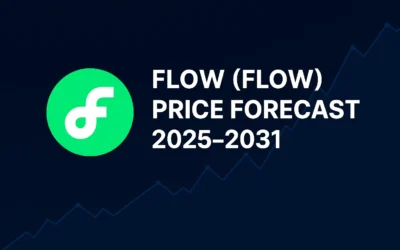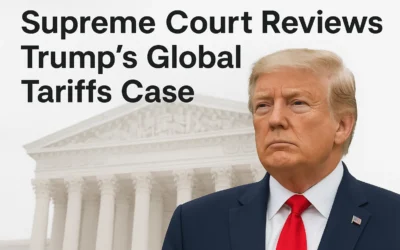Introduction
The Indian rupee collapsed to a record low of 88.29/USD, triggering market turmoil as punitive U.S. tariffs doubled to 50% on Indian exports. Traders now eye 89 as the next key level, while fears grow over the drag on India’s GDP and widening trade deficit. For investors, the panic signals both imminent risk and contrarian opportunity in one of the world’s fastest-growing emerging markets.
One of the Best Broker in Europe
European investors can access Indian markets and currency-linked plays via Interactive Brokers and Saxo Bank, offering direct INR/USD forex exposure, Indian ADRs, ETFs, and bonds.
Financial Performance
- Rupee dropped to 88.29/USD, rebounding slightly to 88.12 on RBI intervention.
- INR down 3% YTD, the worst-performing Asian currency in 2025.
- India’s GDP growth forecast: 6.5% this year, but tariffs could cut 0.6–0.8%.
- Foreign portfolio outflows: $9.7B YTD.
Key Highlights
- U.S. tariffs doubled to 50% on Indian goods.
- INR hit lifetime low, breaking past February’s 87.95 level.
- Weak exports, especially in textiles and jewelry, could trigger job losses.
- India’s trade balance under pressure from weak portfolio inflows.
Profitability and Valuation
- Export-heavy sectors (textiles, gems, jewelry) under strain.
- Large-cap IT and pharma firms may benefit from rupee depreciation through improved export competitiveness.
- Indian equities remain relatively expensive compared to peers but could become attractive if panic selling persists.
Debt and Leverage
India’s sovereign debt metrics remain stable but rising bond yields could increase refinancing pressure. Weak INR may also raise the cost of dollar-denominated debt for corporates.
Growth Prospects
- Short term: tariffs and weak INR drag on growth.
- Long term: India’s domestic consumption story remains intact.
- IT services, pharmaceuticals, and energy exporters may gain pricing power from rupee weakness.
Technical Analysis
- INR/USD: Breaking past 88 triggered stop-loss cascades.
- Key support: 88.00, resistance: 89.00.
Target Prices (INR/USD):
- 1 Month: 88.50
- 3 Months: 89.00
- 6 Months: 90.00
- 12 Months: 86.50 (rebound if tariffs ease)
Stop Loss: 89.50
Potential Catalysts
- Further RBI intervention to stabilize rupee.
- U.S.–India tariff negotiations.
- Portfolio inflows returning on valuation-driven buying.
- Policy support for exporters from New Delhi.
Leadership and Strategic Direction
Prime Minister Modi’s government faces tough choices: defend currency reserves or allow INR weakness to improve competitiveness. RBI’s interventions signal determination, but consistent dollar selling would erode reserves.
Impact of Macroeconomic Factors
- U.S. tariffs directly pressure exports and growth.
- Global dollar strength compounds rupee weakness.
- India’s balance of payments fragile amid weak FPI inflows.
Total Addressable Market (TAM)
India’s equity market cap exceeds $4 trillion. A structural devaluation may open up entry points in IT, energy, and pharma for global investors targeting long-term growth in the world’s most populous nation.
Market Sentiment and Engagement
Sentiment is bearish in the short term, but seasoned investors view the rupee crisis as a potential setup for a rebound in equities and exporters. Contrarian positioning could deliver significant returns if the panic overshoots fundamentals.
Conclusions, Target Price Objectives, and Stop Losses
India’s currency crisis signals caution, but also opportunity. Exporters may benefit while the broader economy absorbs tariff shocks. Investors should brace for volatility but prepare to accumulate high-quality Indian equities.
Targets (INR/USD):
- 1M: 88.5
- 3M: 89.0
- 6M: 90.0
- 12M: 86.5
Stop Loss: 89.5
Discover More
For more insights into analyzing value and growth stocks poised for sustainable growth, consider this expert guide. It provides valuable strategies for identifying high-potential value and growth stocks.
We also have other highly attractive stocks in our portfolios. To explore these opportunities, visit our investment portfolios.
This analysis serves as information only and should not be interpreted as investment advice. Conduct your own research or consult with a financial advisor before making investment decisions.
Looking to Educate Yourself for More Investment Strategies?
Check out our free articles where we share our top investment strategies. They are worth their weight in gold!
📖 Read them on our blog: Investment Blog
For deeper insights into ETF investing, trading, and market strategies, explore these expert guides:
📘 ETF Investing: ETFs and Financial Serenity
📘 Technical Trading: The Art of Technical & Algorithmic Trading
📘 Stock Market Investing: Unearthing Gems in the Stock Market
📘 Biotech Stocks (High Risk, High Reward): Biotech Boom
📘 Crypto Investing & Trading: Cryptocurrency & Blockchain Revolution
Did you find this article insightful? Subscribe to the Bullish Stock Alerts newsletter so you never miss an update and gain access to exclusive stock market insights: https://bullishstockalerts.com/#newsletter.
Avez-vous trouvé cet article utile? Abonnez-vous à la newsletter de Bullish Stock Alerts pour recevoir toutes nos analyses exclusives sur les marchés boursiers : https://bullishstockalerts.com/#newsletter.









0 Comments